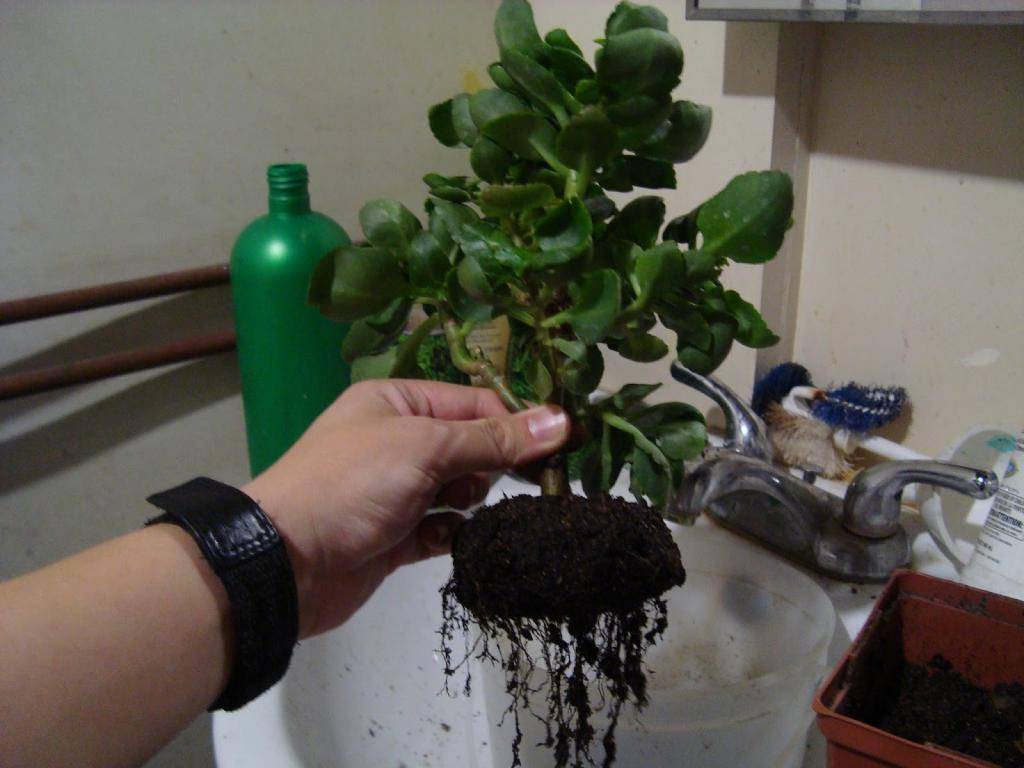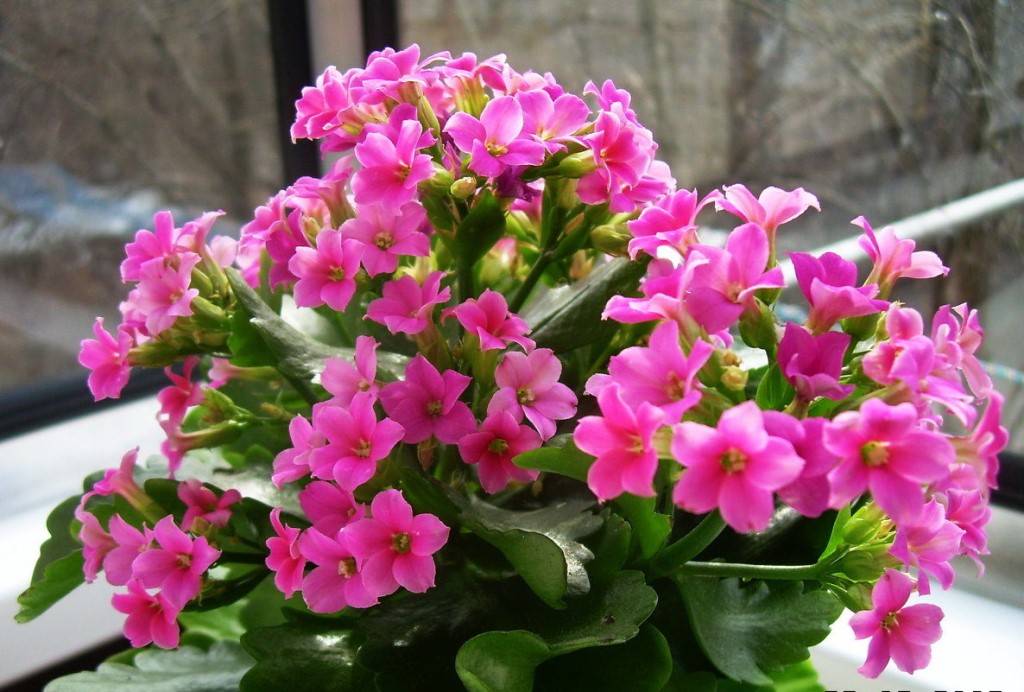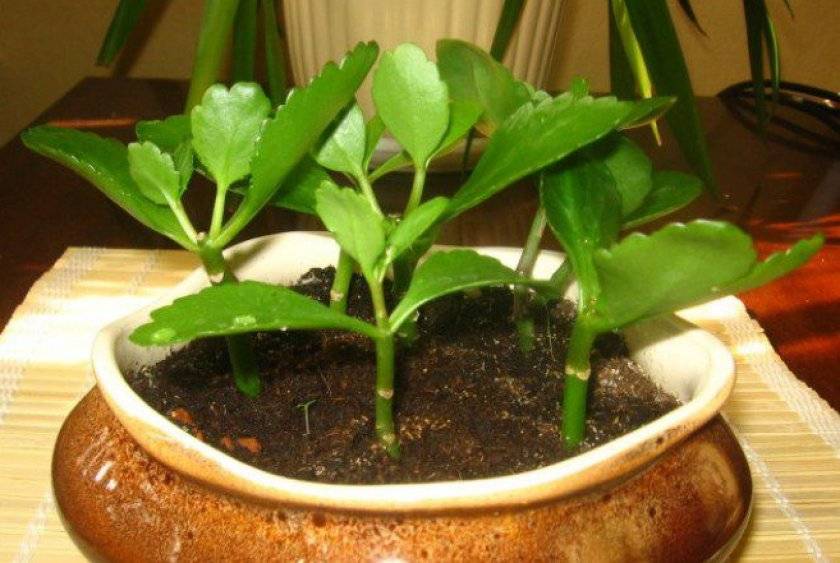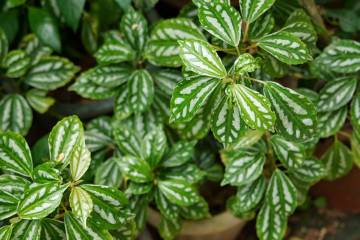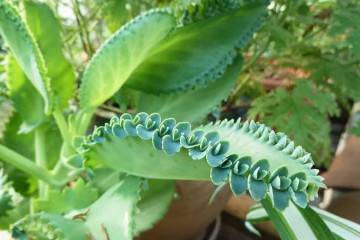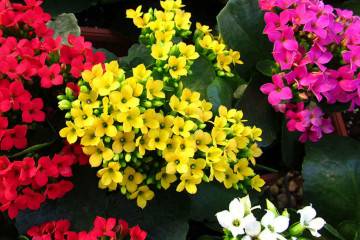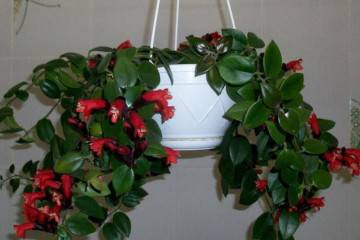Kalanchoe Kalandiva Calandiva - care and reproduction
Content:
A home plant that every gardener dreams of having at home is Kalanchoe Kalandiva. Beautiful and long flowering, undemanding care make it one of the most attractive species for home floriculture.
Kalanchoe Kalandiva - what is this flower
The plant itself is from the Succulent family. It has dense, fleshy leaves and stems, which accumulate water and nutrients.
Numerous shoots are erect and bare. The leaves are colored dark green. The outer surface of the leaf is glossy, ovoid with slightly serrated edges. The length of the leaf reaches 4–6 cm. On the stem, the foliage is located opposite.
Calandiva flower care at home
Kalanchoe Kalandiva is famous for its unpretentiousness, but in order for the flower to grow stronger and please with long flowering, it needs proper care. It includes illumination, watering carried out on time, adherence to temperature conditions, and good feeding.
Illumination and temperature conditions
In the spring-summer season, the plant needs bright diffused light. Daylight hours should last for 9 hours. In winter, the lack of light is compensated by fluorescent or phytolamps.
For good growth, the flower must be kept at room temperature, but it is able to withstand a lower threshold. It is known that the formation of flower buds occurs at a temperature of 14–16 ° C.
Top dressing and soil quality
To plant a plant in specialized stores, you can get a substrate suitable for cacti and other succulents. Experienced flower growers give preference to self-preparation of the soil. For Kalanchoe Kalandiva, it is important to organize neutral acidity and good aeration of the soil.
To create a soil mixture, they take a universal soil, coarse river sand in a ratio of 4: 1. They also use additional necessary elements in the form of leaf humus, peat, turf and leaf land (all equally).
Fertilizers for cacti and other succulents serve as top dressing for Kalanchoe. Natural organic matter is not used. The nitrogen content in it will lead to intensive foliage growth and the plant will not have enough strength for inflorescences. The flower will be green, but not blooming.
Watering rules and humidity
For watering Kalanchoe, they take settled water at room temperature. Water it once a week, and in extreme heat every 3-4 days. Watering should be carried out when the topsoil dries out by 2 cm.
In winter, watering is reduced. They are carried out once every 12-15 days.
Flower container size
The optimal pot size for an adult plant is a container with a diameter of 12 to 18 cm. Starting from the first planting and taking into account all subsequent transplants, the pots should be chosen 1–2 cm larger than the previous one.
Drainage from fine gravel and sand is placed on the bottom of the container. The thickness of the drainage layer must be at least 1–2 cm.
Features of plant transplant after purchase
Having bought a plant in a store, it should be transplanted. The store containers are temporary, and the soil in them does not contain the necessary elements for the healthy growth of the flower.
The transplant is carried out in the following order:
- The flower is watered abundantly, wait 10-15 minutes. and taken out of the pot. Damp soil on the roots should be disposed of by gently rinsing under the tap.
- A new pot with drainage is prepared for the flower. The plant is placed in a container, covered with fresh soil, the layer thickness is 3-5 cm. Further, earth is added along the edges, followed by compaction.
- Water the plant and remove it in partial shade, where it is kept for 3-4 days.
- After this time, the flower is placed on the selected windowsill and looked after as usual.
Flowering and dormant period of the plant
To get a lush flowering Kalanchoe Kalandiva, home care for the color must be carried out according to all the rules. He is able to please the owners with his beauty for 8 months, starting from the end of winter and ending in autumn. Sometimes the flowering period ends earlier, in July.
Terry inflorescences look like balls. The flowers are small, reaching 1.5 cm in diameter. The petals have bright hues. During flowering Kalanchoe Kalandiva (Calandiva) is comparable to a mini-rose thanks to the densely spaced double buds.
The buds bloom in winter. Previously, the plant is provided with the necessary conditions for lush flowering: it is exposed in a room where the temperature is moderately low, with suitable lighting. During the dormant period, the flower is watered moderately. In November, pinching the bush is done. After that, the first buds appear.
If budding and flowering did not occur in November, the preparation process is repeated in March.
After flowering Kalanchoe Kalandiva begins a period of rest. Its duration is 1.5–2 months. At this time, the pot is placed in partial shade. Watering during this period is limited, the temperature is reduced to 14-16 ° C.
Reproduction of Kalanchoe Calandiva
Kalanchoe Kalandiva is not propagated by seeds. Unlike other indoor plants, this method does not make sense for this flower.
Reproduction of Kalandiva is carried out in a vegetative way using apical, stem cuttings or individual leaves.
Before planting the cuttings, they are dried for several hours. Then they are planted in wet sand. The cuttings are buried in sandy soil and covered with a transparent container.
Rooting takes place within 4-6 weeks. To speed up the process, you need to maintain the temperature at 20-24 ° C. Once the cuttings are rooted, they should be transplanted into pots.
Possible problems in growing Kalandiva
Plants that are not harmed by diseases and pests do not exist in principle. Even if they are grown at home, there is a risk that the flowers will pick up some kind of disease or suffer from small insects.
In the case of Kalandiva, common diseases affecting the flower are rot, powdery mildew.
The causes of rot are the oversaturation of the soil with moisture, the presence of the plant in the cold.As a result, the leaves and shoots turn black at the base, or yellowness appears on them, brown spots appear.
In each case, it is necessary to place the plant in a favorable place, remove the affected parts, and treat with medicinal products.
Aphids on a flower are brought either by nearby infected plants, or they enter the house from the street through an open window. You can notice the accumulation of small insects on the leaves, buds and shoots. You should rearrange the flower in a separate place away from healthy specimens. Further treatment consists of washing the leaves with liquid laundry soap, showering, using insecticides: inta-vira, decis, and fasa.
Flowers in the house are harmony, comfort. If this is a plant with a long flowering period, then this is the most successful option for a home interior. Kalanchoe Kalandiva will be a wonderful decoration. His presence in the house is a real blooming holiday.


